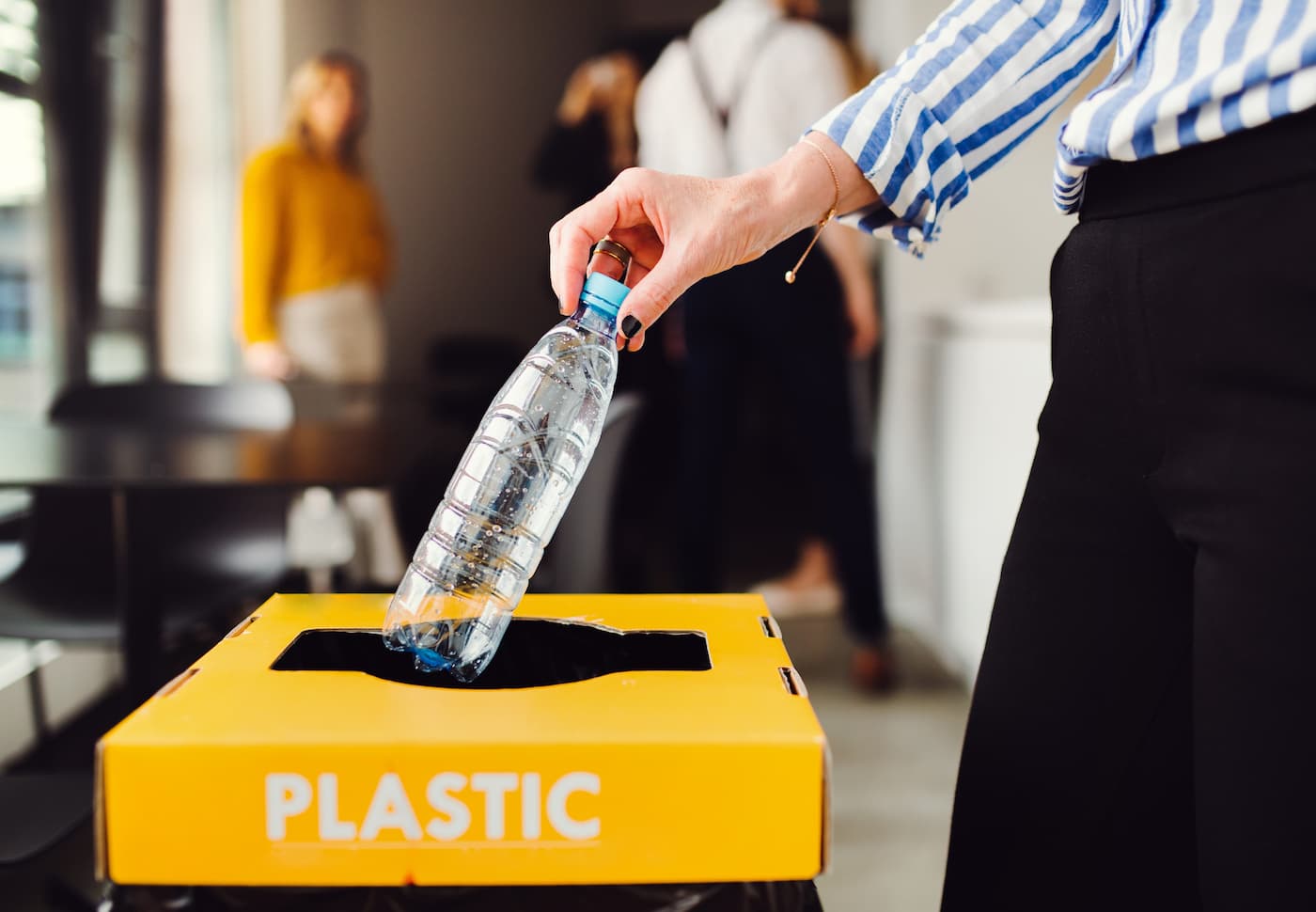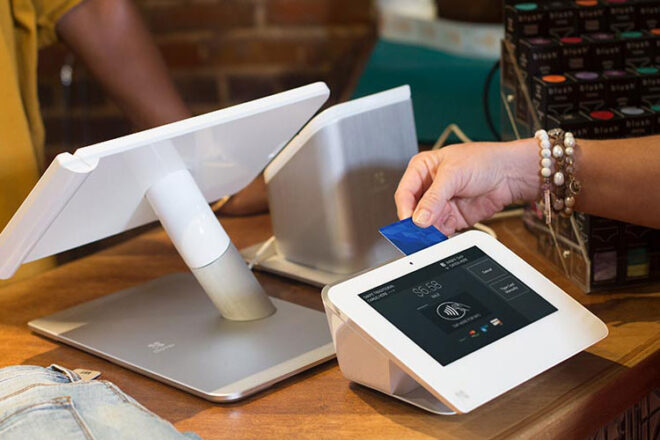Sustainable business practices: Reduce your carbon footprint
Editorial Team
12 min read
For small business owners, when you focus on the importance of reducing carbon footprint impacts and achieving carbon neutrality, you can both help the planet and your business.
Today’s consumers are increasingly interested in sustainability. Adopting more sustainable practices, such as carbon reduction, can help you win more customers, protect the environment, and improve your bottom line.
However big your business is, there are easy and simple ways to become more sustainable. This guide explains how to understand, measure, and assess your business carbon footprint, then take action to decrease the impact your operations have on the environment.
Understanding your business carbon footprint
The United States Environmental Protection Agency (EPA) outlines three categories of greenhouse gas emissions, which are substances released into the air that are measured by concentrations in the atmosphere. These categories are:
- Scope 1 emissions: direct greenhouse gas emissions that are released from business-controlled or business-owned sources. These could include emissions that result from fuel combustion in company-owned vehicles and furnaces, for example.
- Scope 2 emissions: indirect greenhouse gas emissions that result from suppliers of cooling, heat, electricity, and steam. These emissions relate to the organization’s energy use.
- Scope 3 emissions: result of activities from assets that aren’t controlled or owned by the organization, but that the organization indirectly affects. For example, scope 3 emissions may result from business travel, leased assets, investments, and franchises.
The EPA has a simplified greenhouse gas emissions calculator small businesses can use to estimate their environmental impact. Using the Excel tool, business owners can determine direct and indirect emissions from all organization sources.
Measuring and assessing your business carbon footprint
In addition to the EPA small business carbon footprint calculator, the World Wildlife Fund (WWF) lists a variety of other carbon accounting tools and methods. These include:
- Carbon Desktop
- Carbon Footprint
- The Carbon Trust – Footprint Manager
- Compare Your Footprint
- Diligent – SECR software
- Ecometrica Sustainability Reporting & Management Software
- ENGIE Impact Energy and Sustainability Management Platform
- Footprinter
- Greenstone environmental reporting software
- Manufacture 2030
If you’re new to calculating greenhouse gas emissions, you should first take a baseline assessment using science-based greenhouse gas protocol (GHG protocol) standards to determine where you are. That way, you can identify ways to improve your impact and reduce your business carbon footprint.
Setting clear carbon reduction goals
The EPA outlines how to take emissions inventory, set goals, and track progress in a business sustainability plan. The four steps are:
- Review accounting methods and standards, determine organizational and operational boundaries, and choose a base year. For this step, business owners may choose to use third-party verification to get a clearer strategy for greenhouse gas accounting methods, risk and opportunities, and areas to apply net zero targets to.
- Collect data and quantify greenhouse gas emissions. In this step, you can identify data requirements and your preferred methods for data collection. Then, develop a data collection strategy, which may include using one of the above tools to collect data. From here, compile and review facility data, and estimate missing data to fill in gaps. Choose emissions factors, and calculate emissions.
- Create a greenhouse gas inventory management plan to formalize the data collection methods. This plan helps keep your team accountable and helps you meet data collection objectives.
- Set a greenhouse gas emission reduction target to track and report progress on. Make the target public to business stakeholders, investors, and customers. At this point, complete third-party verification and finalize data.
Your greenhouse gas emission targets may include both short-term (1-year) and long-term (5-year, 10-year, 20-year, etc.) goals. You can adjust long-term goals and make them more aggressive or realistic based on your short-term goal progress.
To understand what realistic goals are in your industry, you can use industry-specific calculators listed in the WWF’s Emission Possible Toolkit. You can also look at publicly stated emissions targets for competitors in your industry to see where you stand.
Another way to help ensure your business sets realistic goals is to align with industry standards and regulations. Consult with a business sustainability expert in your industry to see if your goals are realistic or should be adjusted.
Strategies for reducing carbon footprint
There are lots of ways to reduce your carbon footprint within your business. While some may require an up-front investment, the good news is you can get a return on that investment through many ways.
One is by decreasing your business energy bills. When you take precautions to protect the environment, you can also lessen your risk of creating a business environmental disaster that results in costly fines and potential business shutdown.
Also, consumers today are increasingly interested in choosing sustainable brands. As a 2023 report from McKinsey & Company shows:
- 60% of U.S. consumers said they’d pay more for a product with sustainable packaging.
- 78% of U.S. consumers say that a sustainable lifestyle matters to them.
- Products that make environmental claims averaged an 8% higher cumulative growth rate over a 5-year period compared to products that made no such claims.
To lower your energy bills, protect the environment, and satisfy sustainability-minded customers, the following are some simple ways to help reduce the carbon footprint of your business.
Energy efficiency
First, look at all the energy sources your business uses. You can upgrade lighting, HVAC, and appliances to energy-efficient models.
You can also consider creating an energy management system, which provides a framework for smart energy use. To develop energy management systems, the International Organization for Standardization recommends to:
- Secure management buy-in by explaining the business benefits of a systematic approach to energy management.
- Set achievable targets for energy use.
- Design action plans to reach targets and measure progress, which may include reducing energy waste, implementing new energy-efficient technologies, and improving current energy production processes to decrease costs.
Once an energy management system has been installed, business leaders can compare old utility bill costs with new ones once more energy-efficient technologies are in use. That can help business leadership make the case for energy management system ROI and secure future investments in energy-efficient technology.
Renewable energy sources
Renewable energy sources, such as solar and wind energy, decrease the carbon footprint and can be smart business investments. The EPA outlines several business options for using renewable energy, which include:
- Generating renewable energy through on-site power generation
- Purchasing renewable energy credits from an electric utility
- Purchasing green power through a green power procurement process
There are also biogas, geothermal, biomass, low-impact hydroelectricity, and emerging technology sources for renewable energy, such as wave and tidal power. Your business location may influence the most prevalent forms of renewable energy available.
If you determine that using fossil fuels makes the most sense for your business, you might consider carbon offsetting options. With carbon offset programs, businesses can invest in projects that reduce carbon emissions, which helps balance the carbon production that occurs when a business uses non-renewable forms of energy.
Sustainable transportation
One of the easiest ways to cut down on emissions caused by employee transportation is to offer telecommuting and remote work options for your workforce. Most of today’s workers prefer remote work options. As research from McKinsey & Company shows, when people have the chance to work flexibly, 87% take it. Offering remote work can boost sentiment among your workforce while decreasing your carbon footprint.
If you do require employees to come into the office, you can promote carpooling and/or using public transportation to come to work. Some workplaces offer incentives for choosing these transportation options, such as rewards or preferential parking.
Sustainable procurement
The materials and services you use to manufacture your own goods and services also contribute to your overall business carbon footprint. When choosing eco-friendly materials suppliers, compare each supplier’s own sustainability initiatives. LinkedIn has a handy worksheet that helps business owners identify their goals, do research, ask questions, compare options, and monitor performance among suppliers.
You may also want to prioritize sourcing materials from local suppliers. This can help you reduce your carbon footprint, as there’s less transportation of goods involved.
Also, consider circular economy practices for material waste reduction. In a circular economy, businesses share, lease, repair, reuse, recycle, and refurbish existing products and materials as long as possible. That way, the life cycle of products is extended, and waste is minimized.
If you no longer have use for a product, or a product has reached the end of its life, research ways to recycle it or make it useful in a new way. Enlist sustainable waste partners or look for nonprofits that could benefit from your old materials.
Waste reduction and recycling
Speaking of recycling, look at ways to reduce waste and recycle more at work. Talk with your waste management provider about setting up a business recycling program. In addition to recycling materials, such as office supplies and electronics, enquire about composting/organics programs, especially if you serve food or have a kitchen at work. This can help your business reduce methane emissions and turn food waste into useful products, such as compost.
To create a broader waste reduction program at work, the EPA recommends to:
- Track waste. First, collect data on how much waste your business currently generates. You can use the free ENERGY STAR Portfolio Manager® to track waste.
- Choose an accountability team. If you already have sustainability-focused team members, enlist them to create a waste reduction initiative and monitor progress.
- Set goals. Set short and long-term waste reduction goals.
- Promote the program. Share the program’s strategy and goals with your entire workforce, so everyone can contribute.
Remember that the best way to reduce waste is to prevent it by generating less. Look for ways your business can reduce, reuse, and recycle materials and products to decrease waste generation.
Green building practices
If your business is constructing new office space or another physical building environment, you can take steps to design it for energy efficiency. The Leadership in Energy and Environmental Design (LEED) is the leading green building rating system that helps building construction be as energy-efficient as possible. Business owners can seek out LEED certification, which can help businesses attract sustainable-minded partners, investors, and customers.
For existing buildings, partner with a construction consultant on ways you can retrofit your existing space to be more energy-efficient. By incorporating sustainable materials and construction techniques into new and existing building products, you can lower your energy use and create buildings that are sustainable environments for employees.
Employee engagement and education
Your employees can make or break your business success in sustainability. Training and awareness programs, as well as employee incentives and recognition, can help motivate your team to be more proactive in reducing waste and their carbon footprint.
Some examples of ways to engage employees in green initiatives include:
- Create contests for recycling among various departments
- Provide waste reduction education in the form of flyers throughout an office space
- Offer free lunch-and-learn programs that educate employees about sustainability
- Provide incentives for waste reduction, such as carpool program rewards
It’s also important to share carbon reduction goals among your workforce and show employees how the team’s actions are impacting goal progress. As employees see that their actions are actually making a difference, that may motivate more workers to do their part.
Monitoring and reporting
For whatever new business initiative you introduce, make sure you have solid measurement plans in place to track progress and adjust strategies. Regular carbon footprint assessments help you understand which methods are making the most impact, and where you might need to change course.
You can report carbon reduction efforts in a variety of ways, including:
- Annual or more frequent sustainability reports for investors and the public
- On your company website and in business marketing materials
- On social media channels
- By participating in sustainability-focused events on behalf of your company
Public reporting helps keep your business accountable in working toward sustainability goals. When you fail to reach targets, consider ways to pivot your strategy or options for increasing investments in energy-efficient technology and methods to help you reach your goals.
Aligning with sustainable partners to grow your business
The best day to plant a tree was 20 years ago. The next best day is today.
Start your business journey toward sustainability now. Carbon reduction in your existing business practices, and in all future business initiatives, can help you be more sustainable today and in the future. It can also help you bolster your bottom line.
Sustainable practices in business are good for the environment, for employee sentiment, for business finances, and for attracting and retaining customers. Your business can help make a difference in the fight against climate change by setting carbon reduction goals and implementing methods that decrease your environmental impact.
If your business conducts in-person or online transactions, Clover point of sale (POS) systems can help you achieve your sustainability goals. Clover POS systems provide features such as digital receipts and inventory management features that help you prevent product spoilage.
Whether you need an advanced employee management tool to schedule shifts, a retail POS system to handle in-store transactions, or a full restaurant POS system to streamline your establishment’s operations, Clover’s POS solutions can help you do it all with one sleek, user-friendly tool.
Why wait? Elevate your business, and get started with a Clover POS system today.
This information is provided for informational purposes only and should not be construed as legal, financial, or tax advice. Readers should contact their attorneys, financial advisors, or tax professionals to obtain advice with respect to any particular matter.
Related Posts
The unique challenges of starting a veteran-owned business
How to choose a merchant account provider
Popular Topics
Stay in touch
Sign up and learn more about Clover.
Thank you for your subscription!
More posts about starting a small business
eBook





